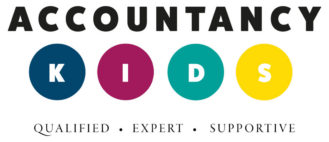It’s an exciting and daunting time during the first few months of building your new childcare business and sometimes the book-keeping and financial paperwork are neglected in this initial stage of your business development.
At the start of your business your accounting records and tax returns may be low on your priority list. You know you have to find time to ensure you don’t neglect this side of the business but it’s pushed to the back of the queue for a later period on the to do list.
Many small business owners may start with a trading loss in their first year as they attempt to establish, market and build the business so tax payments may be avoided in the first year of trading.
When the business grows in the second tax year and the business achieves good taxable profits this can trigger payments on account as well as the tax due for the trading period.
There is growing evidence from many new childcare business owners that they don’t understand the rules regarding the timing on how HMRC collects tax bills and payments on account. This invariably causes problems for clients sending records just before the tax deadlines and some may have a larger tax bill than anticipated because they must also pay payments on account for the current year tax period.
A quick example will highlight the potential cash flow problems that a small self employed business may encounter.
Example
A small out of school club in England has a very successful second year in business with profits of £30,000 tax year ending 5th April 2020 . After deducting the personal allowance of £12,500 that leaves an income tax bill of £17,500 at 20% = £3,500 plus class 4 national insurance at 9% above the lower profit limit of £8,632 = £1,923 national insurance due. Many clients think that the total tax bill is £5,423 due by 31st January 2021 but are shocked when payments on account are also added onto the tax bill.
What are payments on account
Payments on account are payable by the self employed when the previous year tax payable exceeds £1,000. HMRC want to collect current year tax payments quicker if the tax threshold is breached in the previous tax year. The current payments are estimated based on the previous year tax due and payable in two instalments on the 31st January 2021 and the 31st July 2021 at 50% for each date.
In our example the £5,423 due is used to calculate the current year bill at 50% and added to the £5,423 to give a total bill of £8,134 payable at 31st January 2021 and then another 50% is payable on the 31st July 2021 at £2,711.
Cash flow consequences
If a client from a growing business is unaware of the tax bill rules then potentially in the second year they may encounter cash flow problems, tax penalties and late tax payments to HMRC. If a client waits until the beginning of January 2021 to prepare tax returns then the consequences from our example shows that they would have to find an extra £2,711 by 31st January 2021 and then an additional £2,711 by 31st July 2021.
If the client is continually late in sending their books to us then as you can see a growing business with a tax year ended 5th April 2021 won’t have additional months to make tax payments once payments on account are triggered.
Can clients adjust payments on account
Payments on account can be adjusted online if the client believes the estimates are too high but they may be liable for interest payments if the adjustment is wrongly estimated. Once the actual tax return is completed after the 5th April then an adjustment would be made to pay additional tax based on a lower estimate or a refund requested on the submission of lower profits than anticipated.
It’s vitally important to prepare your books in a timely manner and to set aside money or make monthly payments to HMRC to avoid any cash flow difficulties and shocks when the tax return is submitted.
Tips to follow:-
- Be aware what payments on account are and the dates when they are payable.
- Ensure you prepare your accounts and submit your tax returns shortly after the financial year end.
- Plan how much money to set aside to pay your tax bills, why not make regular payments to HMRC if that makes you feel more comfortable in planning how to pay your tax bills.
- Watch out for any employment income that you have as well as your self employed business, combined this can trigger payments on account even if you childcare business is relatively small.
Please contact us by email at mcdowallaccountancy@windowslive.com if you require any additional help.
